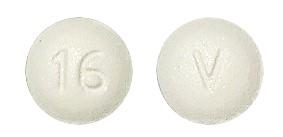Zafirlukast Disease Interactions
There is 1 disease interaction with zafirlukast.
Zafirlukast (applies to zafirlukast) liver disease
Major Potential Hazard, High plausibility.
The use of zafirlukast may be associated with elevations of one or more liver enzymes as well as life-threatening hepatic failure. Cases of liver injury without other attributable cause have been reported from postmarketing surveillance of patients treated with the recommended dosage of zafirlukast (40 mg/day). Although most cases have been reversible following drug discontinuation, fulminant hepatitis and progression to hepatic failure, liver transplantation, and death have rarely been reported. In patients with hepatic cirrhosis, serum zafirlukast concentrations may be 50% to 60% higher than in normal patients. Zafirlukast is contraindicated in patients with hepatic impairment including hepatic cirrhosis. Periodic serum transaminase testing is recommended to enable early detection of drug-induced hepatic injury. Patients should be advised to contact their physician immediately if they experience signs or symptoms of liver dysfunction (e.g., right upper quadrant abdominal pain, nausea, fatigue, lethargy, pruritus, jaundice, flu-like symptoms, anorexia, and enlarged liver). Zafirlukast should be discontinued, and liver function tests performed immediately if hepatic injury is suspected. The drug should not be resumed if hepatic injury is confirmed. Patients in whom zafirlukast was withdrawn because of hepatic injury where no other attributable cause is identified should not be re-exposed to zafirlukast.
Switch to professional interaction data
Zafirlukast drug interactions
There are 306 drug interactions with zafirlukast.
Zafirlukast alcohol/food interactions
There is 1 alcohol/food interaction with zafirlukast.
More about zafirlukast
- zafirlukast consumer information
- Check interactions
- Compare alternatives
- Pricing & coupons
- Reviews (7)
- Drug images
- Side effects
- Dosage information
- During pregnancy
- Drug class: leukotriene modifiers
- Breastfeeding
- En español
Related treatment guides
Drug Interaction Classification
| Highly clinically significant. Avoid combinations; the risk of the interaction outweighs the benefit. | |
| Moderately clinically significant. Usually avoid combinations; use it only under special circumstances. | |
| Minimally clinically significant. Minimize risk; assess risk and consider an alternative drug, take steps to circumvent the interaction risk and/or institute a monitoring plan. | |
| No interaction information available. |
See also:
Further information
Always consult your healthcare provider to ensure the information displayed on this page applies to your personal circumstances.


